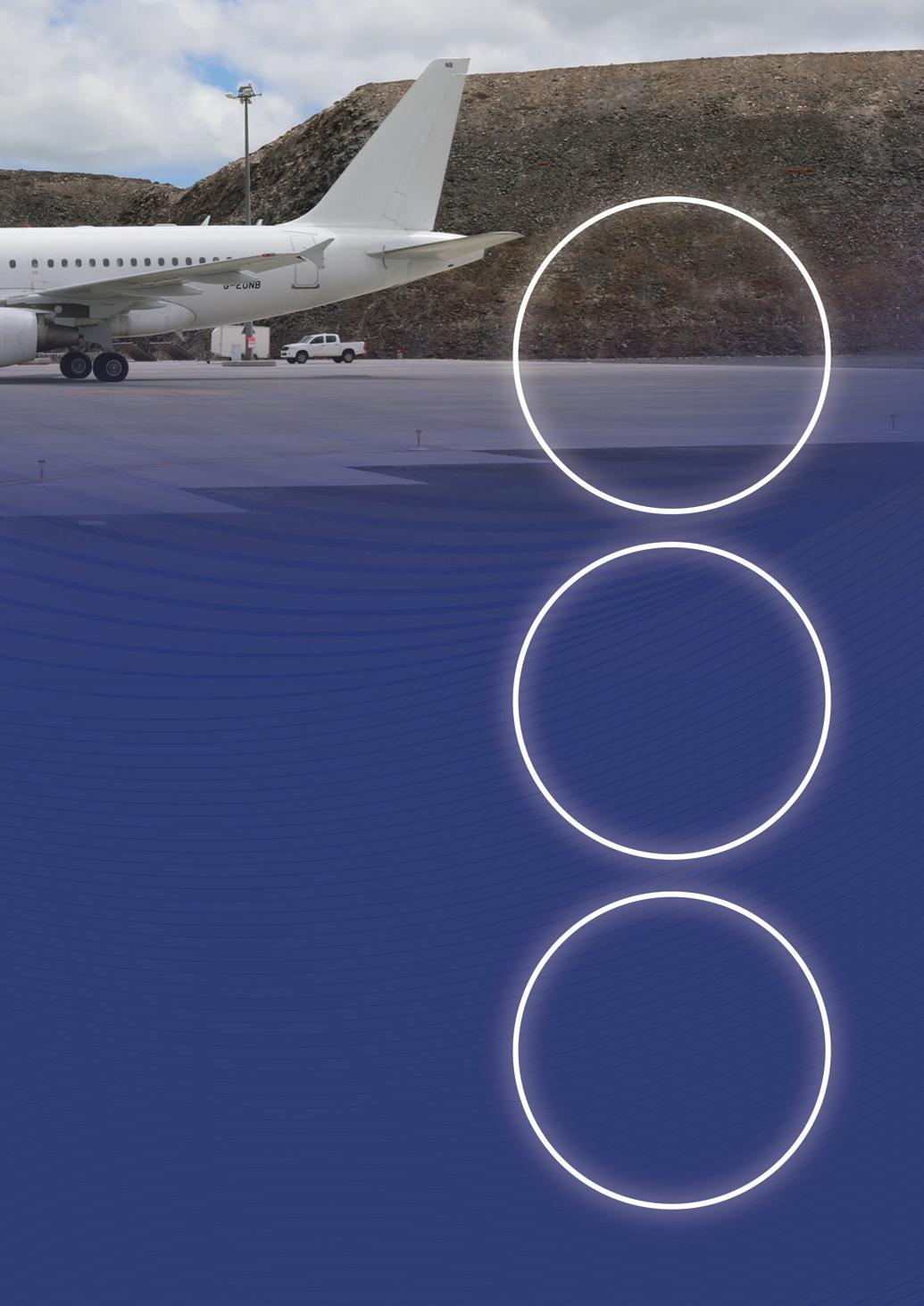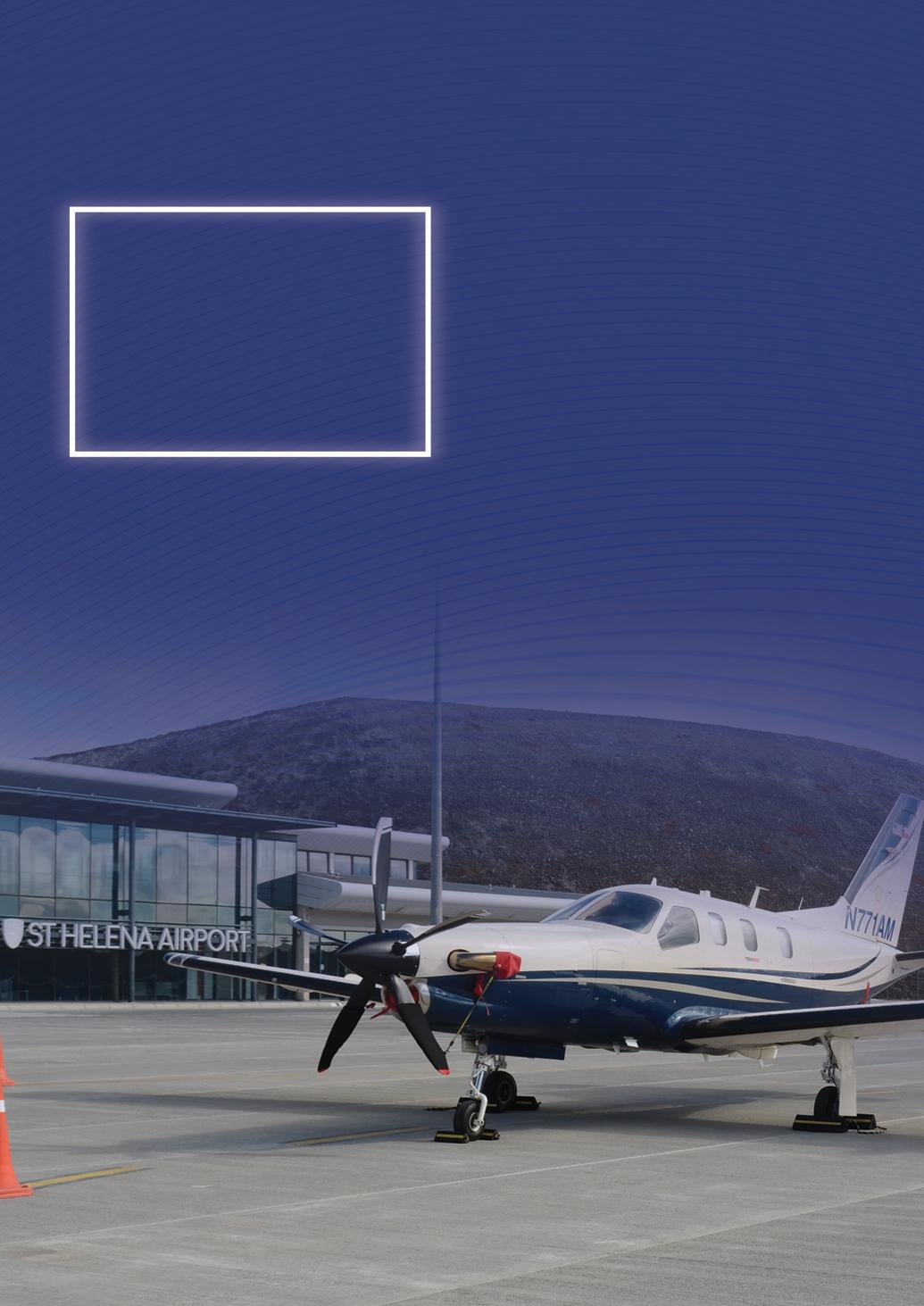






St Helena Airport is located somewhere unique – and remote. The tiny island in the mid-Atlantic is 1,210 miles off the coast of south-west Africa and 2,500 miles from Rio de Janeiro in Brazil. Following its opening in 2016, the airport has gained access to the rest of the world. With the commencement of a small schedule of weekly flights, alongside other services, it has grown steadily in the last five years, only slowing down during the height of the Covid pandemic. CEO Gwyneth Howell and Business Manager Tavonga Chikwenhere gave Hannah Barnett a taste of what goes on behind the scenes at one of the most remote airports in the world.

The opening of the St Helena Airport provided the island with a more efficient link to the rest of the world and, as a result, it is not immune to the challenges facing any airport. “We term ourselves the ‘big-small airport’, having to meet international standards and regulations while operating with very low staff numbers and weekly flights,” said Gwyneth Howell, CEO.

Alongside the weekly commercial departures and arrivals, the airport accommodates frequent private and charter flights. It is also beneficial to aircraft needing technical stops, such as those who use St Helena as a layover between South America and southern or western Africa. Most crucially, the airport supports medevac services to take seriously ill patients to the African mainland to receive treatment. Undertaking these bespoke operations requires considerable flexibility and commitment from staff working at the airport.
The contribution to medical services, via medevac flights, has been a great success and proved the airport’s worth over the last five years. Partly because it has also been able to link up with Ascension Island, relatively close at 800 miles away.
“In 2021 we had 22 Medevacs taking critical patients to South Africa for urgent medical treatment,” explained Mrs Howell. “In 2022, we have had 17 Medevacs, however four of these being Medevac flights for Ascension Island. The operator Awesome Air uses St Helena as a technical stop to and






from Ascension.” Mrs Howell added that the contribution to medical services, via medevac flights, has been a great success for the airport over the last five years.
Mrs Howell also noted that the Airlink weekly flights were a ‘silent Medevac’ as it has made it possible for less critical patients who require specialised and critical treatment not available locally to get off and, on the island without any hassle. The airport is an important lifeline to the community in need of critical medical attention.
Like the rest of the world and stakeholders in the global aviation industry, the ‘big-small’ airport felt the negative impact brought on by the Covid pandemic. St Helena Airport saw a major decrease in passenger numbers and flights. Mrs Howell noted that “We saw pax numbers decreasing dramatically, from 9,462 at our peek in 2019 to 3,048 by 2021”.
Due to the travel restriction put in place by local authorities and the South African authorities at the height the Covid pandemic, “Airlink fights to the island were
suspended on the 22 March 2020,” recalled Mrs Howell. “The St Helena Government then put in place charter flights which were operated by Titan Airways. These flights then ensured that we continued to provide our service as the gateway to the island throughout the whole period.”
The island travel restrictions were completely eased back on the 8th of August and that same month Airlink scaled back flights. “The easing of restrictions and the resumption of Airlink flights have brought about a great sense of optimism for us as an airport, we have recorded passenger number of 5,924 to date and this is passengers before 2022 was out.”
The ‘big-small’ airport is fiercely proud of its commitment to the environment, for example, the airport has a Carbon Management policy. “The main aim of that policy,” said Mrs Howell, “is to assess, reduce and mitigate greenhouse gas emissions under its direct control. All the while guiding aviation stakeholders and users of the airport to assess, reduce and mitigate their emis -

sions, with the ultimate aim of achieving carbon neutrality.”
Mrs Howell went on to explain that this commitment supports UN-defined Sustainable Development Goals and is another way St Helena is connected to the rest of the world. St Helena must keep its carbon footprint in mind. And it does, with a host of sustainable initiatives.
“We achieved the ACI Airport Carbon Accreditation Level 1 on the 3rd of December 2020,” said Mrs Howell. “ACI conduct a desk top remote APEX (Airport Excellence Programme) Safety Audit. The APEX Programmes combines the mandate for regulatory compliance with day-to-day operational needs to maximise operational efficiency and safety standards.”


The airport has also committed to supporting the vision of the wider St Helena Island 10-year plan under the ‘Altogether Greener’ heading. The goal is to safeguard the environment for future generations by minimising pollution and the use of resources.




‘Altogether Greener’ objectives:
• Minimise the impact of airport activities on biological diversity in the airport area.
• Minimise the risk of introducing nonnative species of plants and animals to the island.
• Minimise the use of resources without affecting aircraft and passenger safety.

• Adopt the waste mitigation hierarchy of Reduce – Re-use – Recycle – Recover.
Mrs Howell was enthusiastic about what can be accomplished through adopting these objectives. “We will minimise noise, vibrations and the visual impact on local communities,” she said. “Maximise the social and economic benefits of the air -
port through preferential employment of St Helena citizens and outsourcing to local suppliers. Ensuring the requirements of the Environmental Management System are extended to all suppliers.”
As Mrs Howell acknowledged, the airport has a strong relationship with its partners, and a close network of local suppliers across the island. “We have worked very hard to maintain the same suppliers for most of our goods and services,” she said. “Additionally, we use a select bunch of freight forwarders for goods coming from the UK and South Africa.
“Environmental and economical awareness and the inward freight schedule are important. The inward flight has limited
freight capacity, especially when it comes in with a full load of pax. So, you will note in peak season the freight loads are low, in low season the freights loads are high. However, we also rely on the cargo vessel to transports goods to the island for the airport.”
Unsurprisingly, the ‘big-small’ airport’s vision for the growth and development over the next few years is large in scope but realistic in content.

“I want us to keep the airport open and operational, grow the commercial flights and look for other partners,” said Mrs Howell. “We plan to develop a customer engagement strategy post Covid-19 with other players on the island. We would like to see an increase in Airlink flights during the diving and whale shark season of 2023-2024.”
Mrs Howell sees collaboration as the essential element of the success stoking the fires of this distinctive and intriguing ‘big-small’ airport. “My entire career, I have believed hard work and dedication is key to all working towards a common goal,” she reflected. “Every day at work is an opportunity to contribute to the growth of the company. It brings satisfaction knowing that I have done my best to improve something or create something great.”

